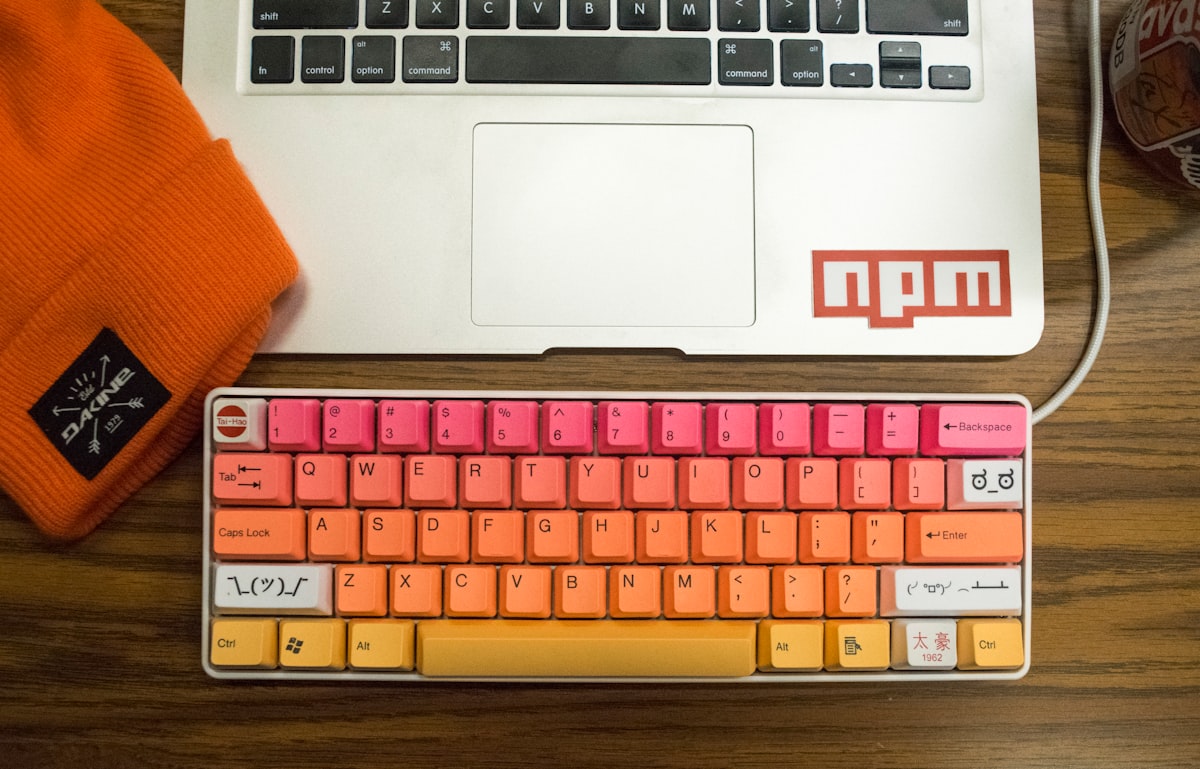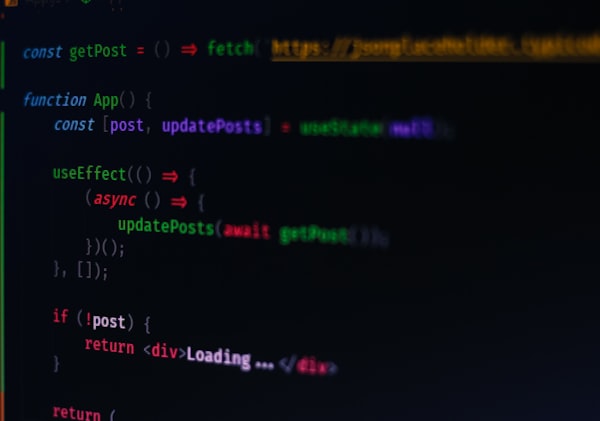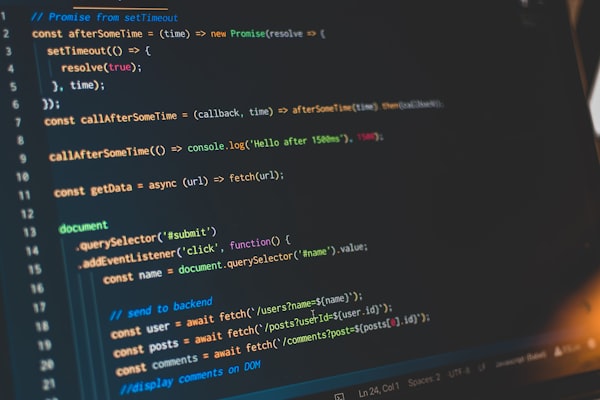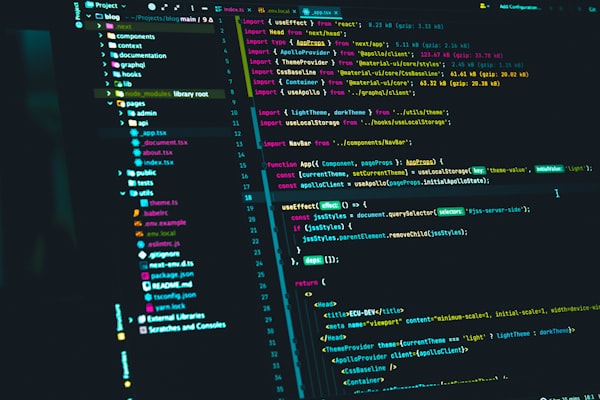1. Introduction to Functional Programming Concepts
Ahoy, code adventurer! Welcome to the world where functions rule and mutable states drool. The land of Functional Programming (FP) is like Hogwarts for JavaScript developers: a place where magic happens, but instead of wands, we've got pure functions, and instead of spells, we use declarative code.
Functional Programming isn't just a nerdy term that developers throw around to sound cool at tech parties (although, let's admit, it does sound pretty rad). No, it's a paradigm, a perspective, a fresh lens through which to view the world of coding. It emphasizes that functions should have a single job, not mess with outside variables, and, most importantly, not bring unexpected surprises. Imagine coding like making a smoothie: FP ensures you get a delicious outcome without finding a stray spinach leaf in your teeth.
Before we hop on our JavaScript broomstick and fly into the deeper skies of FP, remember this: just as one doesn't simply walk into Mordor, one doesn't just dive into functional programming. It requires an understanding of certain principles, a pinch of patience, and a generous sprinkle of curiosity. So, buckle up, because we're about to embark on an enchanting journey through the realm of FP in JavaScript.
2. Understanding the Principles of Functional Programming
Step right up, dear reader, to the mesmerizing carnival of Functional Programming Principles. It’s like the Avengers, but for coding – every principle comes with its unique superpower that, when combined, creates marvelously harmonious code.
1. Pure Functions: The unsung heroes of FP. Imagine them as your trusty baristas - every time you ask for a cappuccino, you get a cappuccino, not a mocha or an iced tea. Pure functions give the same output for the same input, without side-effects, ensuring your code’s consistency.
2. First-Class and Higher-Order Functions: In the glitzy world of JavaScript, functions are celebrities! They can be assigned to variables, passed around, or even returned, much like collectible trading cards. A higher-order function? It's the A-lister, accepting other functions as parameters or returning them.
3. Immutability: Think of this as the "Do Not Touch" sign in a museum. Once data is created, it can't be changed. Instead of altering, we create a new version. This ensures that your data remains pristine, like a painting that never fades.
4. Referential Transparency: This sounds like a term from a sci-fi movie, but it's rather simple. If a function produces the same result every time with a particular input, it's said to have referential transparency. It's like that reliable friend who ALWAYS orders pepperoni pizza – predictable and trusty.
5. Functions Over Data: In FP, the spotlight is on operations rather than data structures. It's like preferring the plot of a movie over the actors – what's done is more important than what it's done with.
6. Recursion Over Looping: In the fairy tale of FP, recursion is our magic beanstalk, letting us repeat processes without traditional loops. It might seem like an endless story, but with the right base case, you'll always find your golden egg.
7. Declarative Not Imperative: It's the difference between "Do this, then that" and "Here's what I want." FP is like ordering a tailor-made suit, specifying your needs, and letting the tailor handle the nitty-gritty.
So, with these principles in hand, you're well on your way to becoming the Dumbledore of JavaScript functional programming. And remember, the magic isn't in the wand (or the function) – it's in how you wield it!
(Note: Dive deeper into the magical world of FP principles with Eric Elliott's comprehensive guide. A perfect read for every budding wizard in the realm!)
3. Key Advantages of Functional Programming in JavaScript
Drumroll, please! 🥁 Enter the stage, the dazzling benefits of Functional Programming (FP) in JavaScript. Think of these advantages as the superheroes of the digital realm – each with its distinctive cape, swooping in to save your code from impending doom.
1. Bug Busters: With FP, bugs stand as much chance as ice cream in the Sahara. Pure functions and immutable data mean predictable results and fewer side effects, making debugging feel like solving a 2-piece jigsaw puzzle.
2. Readability and Maintainability: It's like Shakespeare, but for code. The declarative nature of FP makes your code a poetic masterpiece, where every line tells a story. And when you revisit it months later, there’s no "What sorcery is this?" moment.
3. Concurrency Champs: In the multi-threaded world of web applications, FP is your golden ticket. With its immutability powers, data race conditions can take a backseat. It's like having multiple baristas working on your coffee order without spilling a drop.
4. Modularity and Reusability: Crafting code with FP is like playing with LEGOs. You build small, modular functions that can be snapped together in various ways to create grand masterpieces. No more reinventing the wheel; just re-use and cruise.
5. Enhanced Testing and Debugging: Thanks to referential transparency, unit testing becomes a walk in the park. It's like every function comes with its instruction manual, making your life tenfold easier.
6. Scalability Stars: When aiming for the stars (or user growth), FP ensures your rocket doesn’t falter. With its modular structure, scaling applications feels less like climbing Everest and more like a leisurely escalator ride.
7. Performance Boosters: Functional techniques, like lazy evaluation, can skyrocket your application's speed. Your code becomes that overachieving track star, always pushing for its personal best.
There you have it! The many shimmering crowns in the kingdom of Functional Programming in JavaScript. By harnessing these advantages, not only will your code shine brighter than a disco ball, but you’ll also dance your way through challenges with unmatched grace.
4. First Steps: Setting Up Your JavaScript Environment
Grab your digital hiking boots, fellow explorer! Before we embark on this riveting journey through the dense forests of Functional Programming, we must ensure our base camp, aka our JavaScript environment, is all set and stocked up. Think of this as setting up your tent before a camping trip, only less mosquito bites and more bytes of code.
1. Choose Your Trusty Editor: Whether you're a fan of the sleek Visual Studio Code, the ever-reliable Atom, or the swanky Sublime Text, pick one and get comfortable. It's going to be your home away from home!
2. Node.js - Your Loyal Sidekick: Install Node.js to give your JavaScript superpowers beyond the browser. Think of it as the Alfred to your Batman, ensuring your back-end needs are well-catered to.
3. Package Managers - The Supply Chain: Dive into the world of npm or Yarn. These are your magical supply crates, ensuring you have all the tools (read: libraries) needed for your Functional Programming escapades.
4. Linters & Formatters: With tools like ESLint and Prettier, make sure your code is not only functional but also clean and stylish. After all, a sharp dressed code attracts fewer bugs!
5. Setting Up Babel: In the grand theater of JavaScript, Babel is your translator, ensuring that your modern ES6+ JavaScript code is understood even by the older browsers. It's like making sure Shakespeare can be enjoyed in both Old English and modern slang.
6. DevTools Galore: Familiarize yourself with browser DevTools. They're like the magnifying glass for the detective in you, helping you inspect, debug, and analyze your masterpiece.
7. Functional Libraries: Last, but far from least, equip yourself with functional programming libraries like Lodash or Ramda. They're your spellbooks, packed with enchantments to make your functional journey smoother.
And voilà! With these tools in your satchel, you're poised to tackle the wild terrains of Functional Programming in JavaScript. Each step you take is a footprint on the sands of the coding realm, so make sure you tread with confidence and curiosity.
5. Basic Functional Programming Functions in JavaScript
Ah, the core arsenal of our functional programming toolkit! As we dip our toes into the tranquil waters of functional programming, it's essential to be familiar with some of the basic tools at our disposal. Kind of like knowing the essential utensils in a fancy dinner setting. Is that a salad fork or a dessert fork?
1. The Mighty Map: In the land of functional programming, map is our trusty steed. It allows us to traverse through arrays, transforming each element without breaking a sweat. Imagine it as a conveyor belt at a candy factory, turning simple ingredients into delightful treats.
2. Filter - The Gatekeeper: As the name suggests, filter is all about selection. It sifts through your data, handpicking the elements that pass a certain criterion. It's like having a bouncer at the entrance of a swanky club, ensuring only the crème de la crème get in.
3. Reduce - The Alchemist: This is where the magic truly happens. Reduce takes your array, processes it, and gives you a single output. Picture a magician turning a bunch of random objects into a dove.
4. Every & Some - The Jury: These two decide the fate of your arrays. While every ensures that all elements meet a specific condition (like a unanimous jury decision), some is satisfied if even one element passes the test. It's the difference between "all for one" and "one for all".
5. Sort - The Organizer: For those of us who like our socks color-coded and our books alphabetically arranged, sort is a dream come true. It arranges the elements in a specific order, making sure there's never a shoe out of line.
Embracing these basic functions is like having a Swiss army knife on a camping trip. They might seem simple at first glance, but their utility in crafting elegant, functional code is unparalleled. So, the next time you're faced with a coding challenge, remember: you've got some powerful tricks up your sleeve. Happy coding, and may the functions always be in your favor!
6. Immutable Data and Its Importance in Functional Programming
Behold the mighty cornerstone of Functional Programming: Immutable Data! It's like the secret ingredient in grandma's famous pie – seemingly simple, but oh-so-crucial.
What's Immutable Data Anyway?
Imagine a kingdom where once a decree is made, it stands forever unchanged. In the coding realm, that's immutable data for you. Once created, it remains unaltered for all eternity. No take-backs, no do-overs.
The Undying Benefits:
- Consistency is Key: With immutable data, you always know what you're getting. There are no sudden plot twists or unexpected changes. It's like always getting the same flavor of ice cream you ordered – no surprises, just pure delight.
- Debugging Becomes a Dream: Tracing bugs becomes as straightforward as following breadcrumbs. Since the data doesn’t change unexpectedly, you don't have to play detective, searching for what went amiss and where.
- Concurrency Champion: In a world where multitasking is the norm, immutability ensures that multiple operations can safely happen concurrently without the fear of data being modified unexpectedly. It's the calm in the middle of a bustling city.
- Predictable Paradise: Functional programming thrives on predictability. When data is immutable, functions produce consistent outcomes, leading to reliable and robust code. It's like having a GPS that never loses signal.
The Magic Behind Immutability:
The concept isn't about freezing data but rather creating a new version if a change is needed. Imagine a world where, instead of erasing and rewriting, you just draft a fresh page while keeping the original intact.
In the grand saga of Functional Programming, immutable data stands as a sentinel, guarding the principles and ensuring that the code kingdom remains harmonious and prosperous. Embrace it, and you’ll be embracing a world of clarity, reliability, and sheer coding elegance. Remember, in the realm of Functional Programming, it's not just about the data; it's about ensuring the data stands tall, unyielding, and ever-consistent.
7. Working with Higher-Order Functions and Callbacks
Dive deeper into the entrancing whirlpool of Functional Programming and behold: the dynamic duo of Higher-Order Functions and Callbacks. Picture them as the dynamic dance partners in a mesmerizing waltz, leading the rhythm of your code with grace and poise.
Higher-Order Functions: The Maestros of the JavaScript World
Higher-order functions, in their essence, are like the esteemed professors of the JavaScript realm, imparting wisdom by either taking other functions as arguments or bestowing functions as return gifts. Their specialty? Not just working with simple data types, but also harnessing the power of functions within functions.
Benefits of Higher-Order Functions:
- Modularity Majesty: They encourage breaking tasks into smaller, reusable chunks, ensuring your code is as neat as a freshly ironed shirt.
- Dynamic Code Creation: They allow you to craft functions on the fly, making your code more adaptable. It's like molding clay into any shape you desire, as and when needed.
- Code Clarity: They aid in producing more readable and concise code, making it easier for fellow coders (and your future self) to comprehend your coding chronicles.
Callbacks: The Unsung Heroes
Callback functions are those humble pals that patiently wait in the wings, only to jump into action when another function beckons. Think of them as the reliable sidekicks, ever-ready to assist when their moment comes.
Why Embrace Callbacks?
- Asynchronous Acrobatics: Callbacks shine especially bright in the world of asynchronous operations, ensuring tasks like reading files or fetching data are completed smoothly before moving on.
- Flexibility Fanatics: They offer a customizable touch to your functions, allowing them to behave differently based on the task at hand. It’s like having a multi-purpose Swiss Army knife in your toolkit.
- Code Organization: Callbacks help in structuring code in a way that promotes sequence and order, ensuring actions follow a logical progression.
As you wade through the waters of Functional Programming in JavaScript, let the rhythm of Higher-Order Functions and Callbacks guide your journey. When used harmoniously, they transform your code into a symphonic masterpiece, each line singing in harmony with the next. So, gear up and let these two titans elevate your coding prowess to new, dizzying heights!
8. JavaScript Libraries for Easier Functional Programming
Step into the grand library of JavaScript, where rows upon rows of robust shelves house the finest tools to make Functional Programming not just feasible, but fantastically fluid. These libraries are the unsung heroes, the silent orchestrators that turn coding cacophony into a melodious tune.
Lodash – The Swiss Army Knife:
Lodash is like that multi-purpose gadget you never knew you needed until you had it. From array manipulations to object utilities, this library is jam-packed with functional treats that streamline and simplify complex operations.
Ramda – The Pure Enthusiast:
If Lodash is the jack of all trades, Ramda is the master of one: pure functional programming. With its auto-currying capabilities and focus on immutability, Ramda is your go-to for keeping things purely functional.
Immutable.js – The Guardian of Data:
From the esteemed house of Facebook comes Immutable.js, ensuring that your data remains as unchanging as the northern star. This library champions persistent data structures, making sure the sanctity of your data is never compromised.
Functional.js – Lightweight Wonder:
For those looking to tread lightly, Functional.js is a compact yet powerful library, offering a plethora of functional helpers without the weight of larger libraries. It’s the featherweight champion of the functional realm.
ReactiveX (RxJS) – The Reactive Magician:
Dive into the world of reactive programming with RxJS. This library is all about streams and observables, allowing you to react to data changes in real-time. It’s like having a sixth sense, but for your code.
Harnessing the power of these libraries is akin to having a team of coding wizards by your side. They amplify your strengths, cover your weaknesses, and ensure that the path of Functional Programming is not just traversable but truly enjoyable. As you weave your functional tales in JavaScript, let these libraries be the quills that bring your stories to life. Happy coding, and may your functional endeavors be ever fruitful!
9. Real-world Applications: Functional Programming Use Cases
Ah, the pièce de résistance! Theoretical knowledge is all well and good, but the real magic unfolds when we apply this knowledge in tangible, real-world scenarios. Much like mastering the theory of music and then composing a symphony. Let’s dive into the concrete jungles and see how Functional Programming in JavaScript carves its mark.
1. Data Transformation & Analysis:
In a world inundated with data, Functional Programming shines as a scalpel, slicing and dicing data with precision. Whether it's analytics dashboards or complex data visualizations, the principles of FP ensure clean, efficient, and robust data manipulations.
2. Event-driven Applications:
Given the reactive nature of many modern web apps, Functional Programming's declarative approach proves invaluable. It excels in environments where user interactions, server responses, and other events dictate the application flow, leading to more intuitive and responsive apps.
3. State Management in Modern Front-End Development:
Frameworks like React and Redux have embraced the functional paradigm to manage application state. It ensures predictability and consistency, even as applications scale and become more complex.
4. Functional Reactive Programming (FRP):
From real-time chat applications to stock trading platforms, FRP paradigms, bolstered by Functional Programming, allow systems to react to continuous streams of events, making applications incredibly responsive and user-friendly.
5. Concurrency & Parallel Processing:
As applications grow more complex and the need for multitasking becomes paramount, Functional Programming offers a safer environment for concurrent operations. By avoiding mutable state and promoting pure functions, it reduces the risks of unexpected side effects and data corruption.
6. API Development:
The composable nature of functional code makes it easier to build, test, and maintain APIs. Endpoints can be crafted using smaller, reusable functions, streamlining the development process and making the codebase more manageable.
In the grand tapestry of modern-day applications, Functional Programming doesn't just have a place; it has a starring role. It's the secret sauce, the X-factor that can elevate an application from being merely functional to being phenomenally fantastic. So, the next time you're pondering the architecture of a new project or looking to revamp an existing one, remember the illustrious tales of Functional Programming's triumphs in the real world. The world is your oyster, and Functional Programming is the pearl within!
10. Tips and Best Practices for Functional Programming in JavaScript
Alas! The realm of Functional Programming (FP) is much like an enchanted forest, filled with wonders but also riddled with potential pitfalls. To help you navigate through this mystical landscape, here's a curated map of tips and best practices. It’s like having a compass and a guidebook rolled into one, ensuring you stay on the golden path of FP righteousness.
1. Embrace Pure Functions:
Pure functions are the heart and soul of FP. They neither cause side effects nor rely on external factors. Like a reliable recipe, given the same ingredients (inputs), they'll consistently whip up the same delightful dish (output).
2. Avoid Mutable State:
In the kingdom of FP, changing state is often viewed with suspicion. Instead of altering existing data, opt to create new versions. This practice ensures data sanctity and wards off unintended consequences.
3. Use Higher-Order Functions Generously:
JavaScript's array methods, such as map, filter, and reduce, are your best friends. Embrace them! They not only streamline operations but also make your code more readable and elegant.
4. Favor Immutability:
Libraries like Immutable.js can be game-changers. By ensuring data structures remain unaltered, they reduce potential bugs and elevate the predictability of your applications.
5. Limit Global Variables:
The more localized your variables, the fewer the chances of unwanted interference. Think of it as keeping your magical potions neatly labeled and organized to avoid accidental mix-ups.
6. Compose, Don't Complicate:
Instead of crafting monstrous, do-it-all functions, focus on creating smaller, purpose-specific ones. These can then be elegantly woven together, forming a harmonious tapestry of code.
7. Learn to Curry:
No, not the dish! Currying in FP refers to the technique of transforming a function that takes multiple arguments into a sequence of functions that each take a single argument. It's like breaking down a multi-step dance routine into individual moves, mastering each step before blending them seamlessly.
8. Keep Side Effects in Check:
If side effects are unavoidable, confine them. Ensure they're evident, limited, and managed, preventing them from wreaking havoc in the otherwise pristine world of FP.
9. Document Generously:
In the world of FP, your code may sometimes resemble cryptic runes. Generous comments and clear documentation can illuminate its purpose and workings for both your future self and fellow coders.
10. Continually Educate Yourself:
The realm of FP is vast and ever-evolving. Regularly update your knowledge, delve into new libraries, and explore advanced concepts. Treat it as a grand adventure, with treasures of knowledge waiting to be unearthed.
Arming yourself with these best practices is like having a protective cloak in the world of Functional Programming. They'll shield you from common pitfalls and guide your steps, ensuring your journey is not only successful but also truly magical. May your functional quests be filled with elegance, efficiency, and exuberance!








